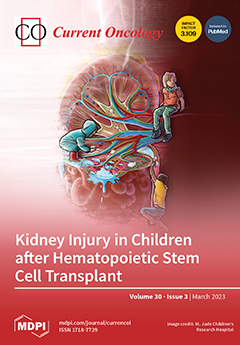Introduction and Objective: Muscle invasive bladder cancer with extravesical extension is an aggressive disease entity that requires multimodal therapy. The benefits of adjuvant chemotherapy (AC) in patients with a positive soft-tissue surgical margin (STSM), however, are relatively unknown due to exclusion of this population in randomized controlled trials of AC. We sought to define survival benefits in this patient population through our institutional bladder cancer database. Methods: Retrospective review of all patients undergoing radical cystectomy for urothelial carcinoma of the bladder from 2004–2020 with ≥pT3b disease irrespective of neoadjuvant chemotherapy (NAC) use was conducted. Progression-free survival (PFS) and overall survival (OS) estimates were obtained using the Kaplan-Meier method with log-rank test, and the Cox-proportional hazards model was used to identify predictors of improved PFS and OS. AC was defined by any chemotherapy use within 90 days of cystectomy, regardless of STSM status. Results: 476 patients with pT3b disease or worse were identified. Median follow-up was 12.3 months. An amount of 21% of patients were treated with AC. An amount of 24% of patients had positive STSM. Median OS for patients with positive STSM was 8.4 months [95% CI 7–11.5] and 18.3 months [95% CI 15.6–20.8] (
p < 0.001) for patients with negative STSM. In the overall cohort, positive STSM (HR 1.93, 95% CI 1.45–2.57,
p < 0.001), AC use (HR 0.68, 95% CI 0.51–0.90,
p = 0.007), and pN1–3 disease (HR 1.47, 95% CI 1.16–1.87,
p = 0.002) were independent predictors of OS when adjusted for performance status, pT-stage, and neoadjuvant chemotherapy use. In patients with positive STSM, median survival was seven months [95% CI 5.2–8.4] without AC, compared to 16.2 months [95% CI 11.5–52.5] with AC (
p = 0.0038). For patients with negative STSM, median survival was 17.4 months [95% CI 14–20.1] without AC compared to 22.3 months [95% CI 17.2–36.9] with AC (
p = 0.23). In patients with positive STSM, AC use was the only factor associated with an OS benefit with a HR of 0.41 (95% CI 0.21–0.78,
p = 0.007). In patients with negative STSM, pT4 and pN1–3 disease were the only factors associated with worse overall survival with a HR of 1.32 (95% CI 1.00–1.74,
p = 0.050) and 1.97 (95% CI 1.49–2.60,
p < 0.001), respectively. Conclusions: Administration of adjuvant chemotherapy is of particular benefit in patients with positive STSM following radical cystectomy for gross extravesical disease. Positive STSM may be a representative of “early metastatic” or micrometastatic disease.
Full article






